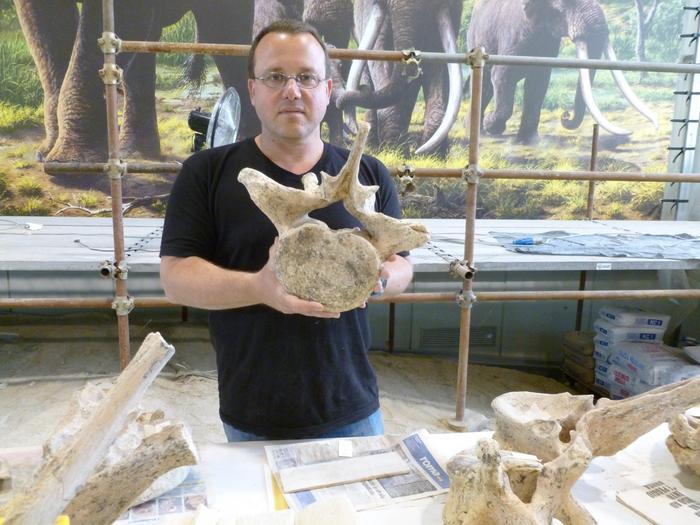A groundbreaking study from Tel Aviv University has unveiled a compelling new hypothesis about the origins of fire use among early humans, challenging previous assumptions and adding nuance to our understanding of prehistoric behavior. According to this research, fire played a crucial role not merely in cooking or warmth but primarily in securing large hunted animals and preserving their meat through smoking and drying processes. This innovative perspective reframes fire as a strategic tool for safeguarding invaluable nutritional resources from both carnivores and microbial spoilage, enabling early human groups to extend the viability of vast quantities of meat.
The study—led by Dr. Miki Ben-Dor and Professor Ran Barkai from the Alkow Department of Archaeology and Ancient Near Eastern Cultures at Tel Aviv University—focuses on the underexplored motivations behind the sporadic but significant presence of fire in archaeological sites dating from 1.8 million to 800,000 years ago. During this interval, evidence for fire usage is rare and inconsistent, often lacking signs of typical roasting or burning of bones. The researchers argue that this pattern aligns with a model in which fire was harnessed deliberately and strategically, not routinely employed, signifying its extraordinary value and the high energy costs of maintaining it.
By analyzing nine ancient archaeological sites worldwide where signs of fire have been documented—including prominent sites such as Gesher Benot Ya’aqov and Evron Quarry in Israel, alongside comparable African and European contexts—Ben-Dor and Barkai identified a consistent presence of large game remains. These assemblages are heavily dominated by megafauna such as elephants, hippopotamuses, and rhinoceroses, whose massive carcasses would have provided calorically dense food stores. Importantly, these hunting trophies represented more than immediate sustenance; they were prized caches of energy akin to biological “banks” that early human groups sought to protect.
The caloric bounty from a single elephant, for instance, could sustain a sizeable community—between twenty to thirty individuals—for weeks. Yet, such precious meat was vulnerable to rapid degradation due to bacterial spoilage and the ever-present threat posed by other predators and scavengers. The study’s central thesis is that fire was employed as a dual-purpose technology: first, as a deterrent against competing animals aiming to pilfer the carcass, and second, as a preservation method whereby meat was smoked and dried. This extended the lifespan of the food resource, effectively transforming a perishable bounty into a stable, long-lasting supply.
This model departs from the commonly accepted view that fire use among early humans—particularly Homo erectus—was primarily for cooking. While cooking undoubtedly arose later as fire use became more regular, Ben-Dor and Barkai suggest that the initial impetus for mastering fire was utilitarian protection and preservation. The effort required for fire making and maintenance was nontrivial, necessitating a clear energetic payback. Given the rarity of fire traces in earlier strata, the researchers propose that early humans only utilized fire under specific conditions, applying it judiciously to maximize resource security and survival prospects during periods of abundance.
Ethnographic comparisons with contemporary hunter-gatherer societies further bolster the hypothesis, demonstrating that meat smoking and drying remain widespread means of preservation in environments where refrigeration is impossible. Such parallels provide a temporal continuum linking ancient practices to those still actively employed today, underscoring the adaptive significance of these strategies in human subsistence patterns. Fire, then, could be viewed not merely as a source of warmth or cooking but as an advanced preservation technology that enabled complex social behaviors centered on food storage and sharing.
Moreover, the findings resonate with a broader theoretical framework developed by the same group of researchers, which positions human prehistory within a context of increasingly specialized hunting of large-bodied fauna and subsequent adaptive responses to their gradual disappearance. As megafauna populations declined over millennia, early humans had to recalibrate their dietary strategies, shifting toward smaller animals and diversifying their caloric intake sources. The mastery of fire for preservation thus can be understood as an early evolutionary innovation critical for metabolic efficiency and social cohesion.
Importantly, the study highlights that once the primary functional hurdles of resource protection and preservation were overcome, fire use likely evolved to encompass ancillary functions such as cooking, lighting, and heating. This progression could explain archaeological indicators of fish roasting around 800,000 years ago at sites like Gesher Benot Ya’aqov, marking a transition from intermittent, high-cost fire usage to more habitual and multifunctional applications.
In synthesizing archaeological evidence, energetic calculations, and behavioral analogs, the authors provide an incisive contribution to one of the most enduring debates in paleoanthropology: what motivated the control and use of fire during the earliest chapters of human evolution? Their work implicates the role of fire not merely as a cooking aid but as a sophisticated technological response to ecological pressures and nutritional demands, redefining the narrative of human adaptation and innovation.
This shift in perspective also invites reconsideration of the fossil and material record, urging archaeologists to reexamine fire-related findings with an emphasis on preservation indicators rather than solely the traces of cooking or domestic use. The study opens new avenues for research, emphasizing the energetic economics of early human life and the social dynamics entailed in managing large-game resources in prehistoric ecosystems.
Overall, this study not only enriches our understanding of early fire use but also illustrates the complex interplay between subsistence, technology, and survival strategies that shaped human evolutionary trajectories. It underscores the ingenuity and adaptability of our ancestors, who harnessed fire in ways that extended far beyond its conventional characterization, laying the foundation for cultural and biological developments that define Homo sapiens today.
Subject of Research: Early human use of fire and its role in meat preservation and protection of large game
Article Title: (Not provided in the source content)
News Publication Date: (Not provided in the source content)
Web References: http://dx.doi.org/10.3389/fnut.2025.1585182
References: Ben-Dor, M. & Barkai, R. Study published in Frontiers in Nutrition
Image Credits: Tel Aviv University
Keywords: Archaeology, Prehistoric archaeology, Hunting, Fire use, Meat preservation, Homo erectus, Megafauna, Smoking meat, Paleolithic, Hunter-gatherers




